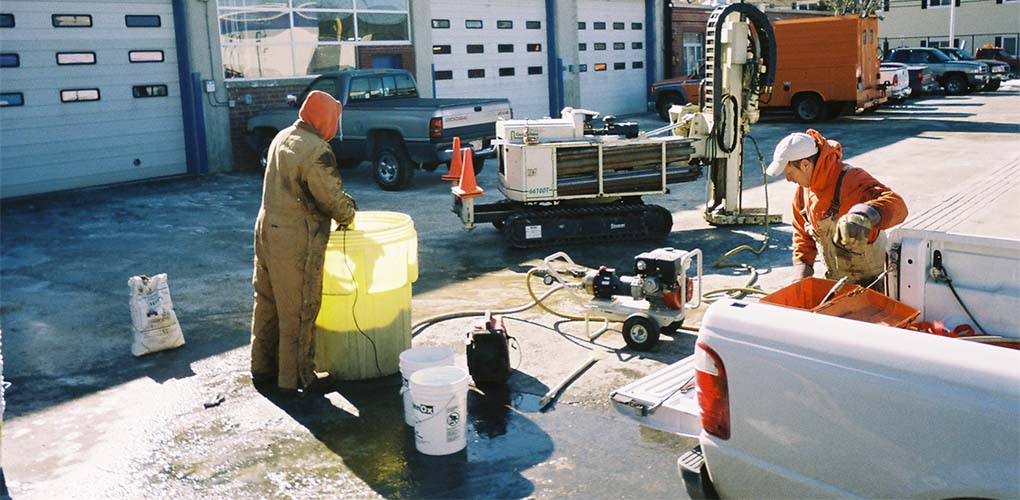DPW Gasoline Site Assessment and Remediation
Wakefield, Massachusetts
BETA was retained by the Town of Wakefield to provide environmental site assessment and remediation for the closure of an existing gasoline release at the Wakefield Department of Public Works (DPW) facility. The site is occupied by the offices and maintenance and storage yard of the Wakefield DPW. Subsurface contamination was initially discovered at the Site in October 1993, during an investigation related to the upgrade of the site’s petroleum underground storage tanks (USTs). Five USTs were subsequently removed, consisting of three 4,000-gallon gasoline tanks, one 2,000-gallon diesel tank, and one 2,000-gallon fuel oil tank. The environmental consultant during this time performed site assessment and characterization activities and submitted MassDEP required reports, however, the site did not achieve closure.
Upon BETA’s hiring by the town in 2004, BETA performed supplemental investigations to define the boundaries of the disposal site including the advancement of soil borings, the installation of monitoring wells, and the collection and analysis of soil and groundwater samples. The results of these investigations were presented in an amended Phase II Comprehensive Site Assessment submitted to MassDEP. BETA also prepared a Phase III Remedial Action Plan to assess viable response action alternatives for the site.
BETA’s selected response actions consisted of short-term removal of contaminated groundwater in the source area of the release followed by a limited program of in-situ chemical oxidation to further reduce contaminated groundwater hotspots. For the groundwater extraction, BETA directed an environmental contractor in the extraction of groundwater from existing groundwater monitoring wells. The extracted groundwater was pumped through a portable on-site granular activated carbon treatment system. The treated water was discharged into an on-site storm water catch basin under the U.S. Environmental
Protection Agency’s newly issued National Pollutant Discharge Elimination System Remediation General Permit that had been previously obtained by BETA. In the second phase of the remediation, BETA selected RegenOx™ as the in-situ oxidation chemical. RegenOx., which is a solid sodium perchlorate complex, is provided by Regenesis, Inc. and is designed to directly oxidize hydrocarbons in the subsurface. BETA directed the application of the RegenOx using a Geoprobe direct push drilling rig to inject it directly into the subsurface. The RegenOx powder was mixed with an activating liquid and water to create a slurry prior to injection into the subsurface. BETA is currently collecting post-treatment groundwater samples to evaluate the effectiveness of the treatment program and anticipates the closure of this release within six to nine months.

